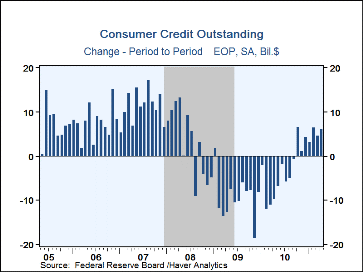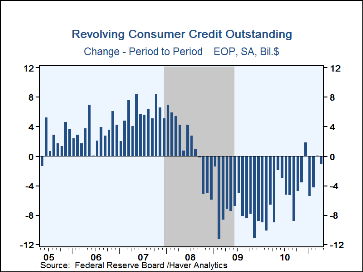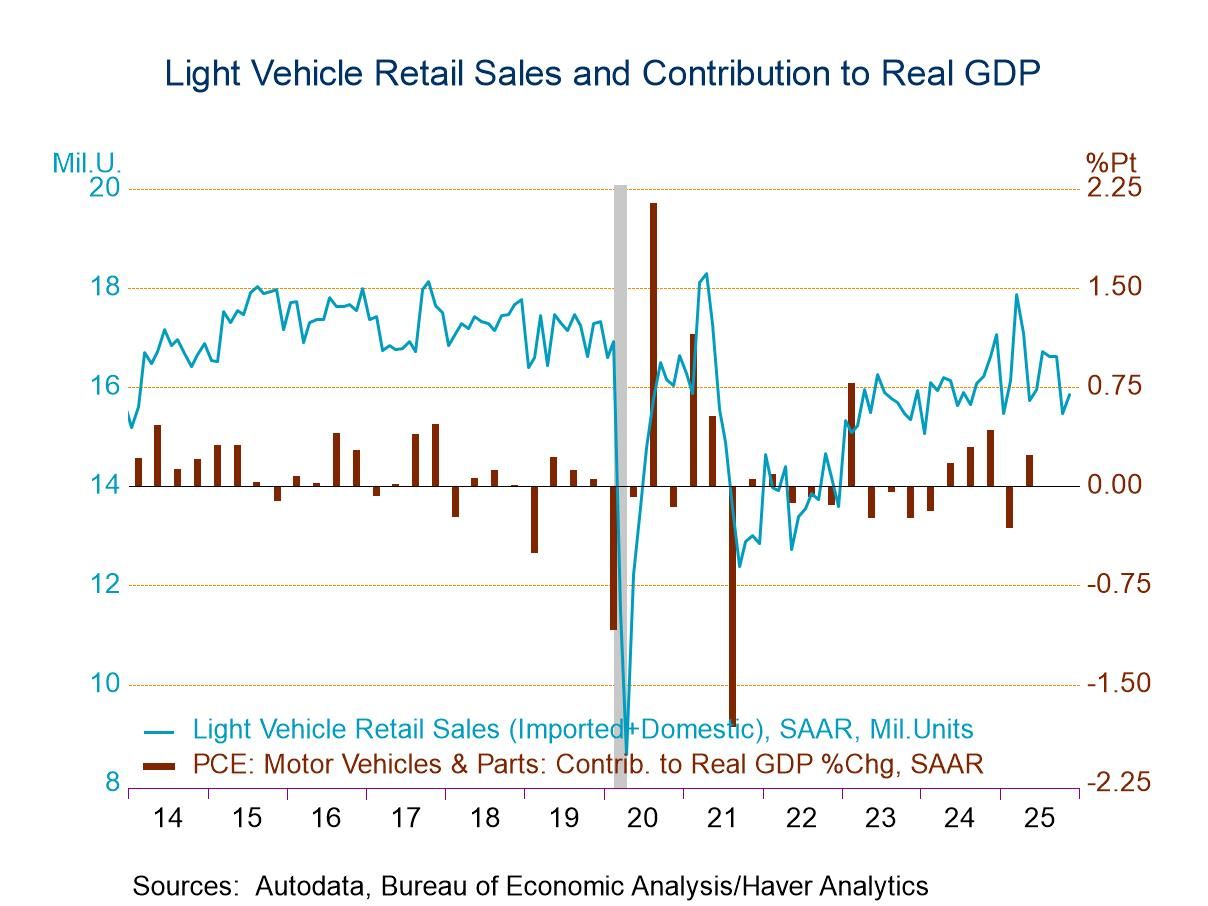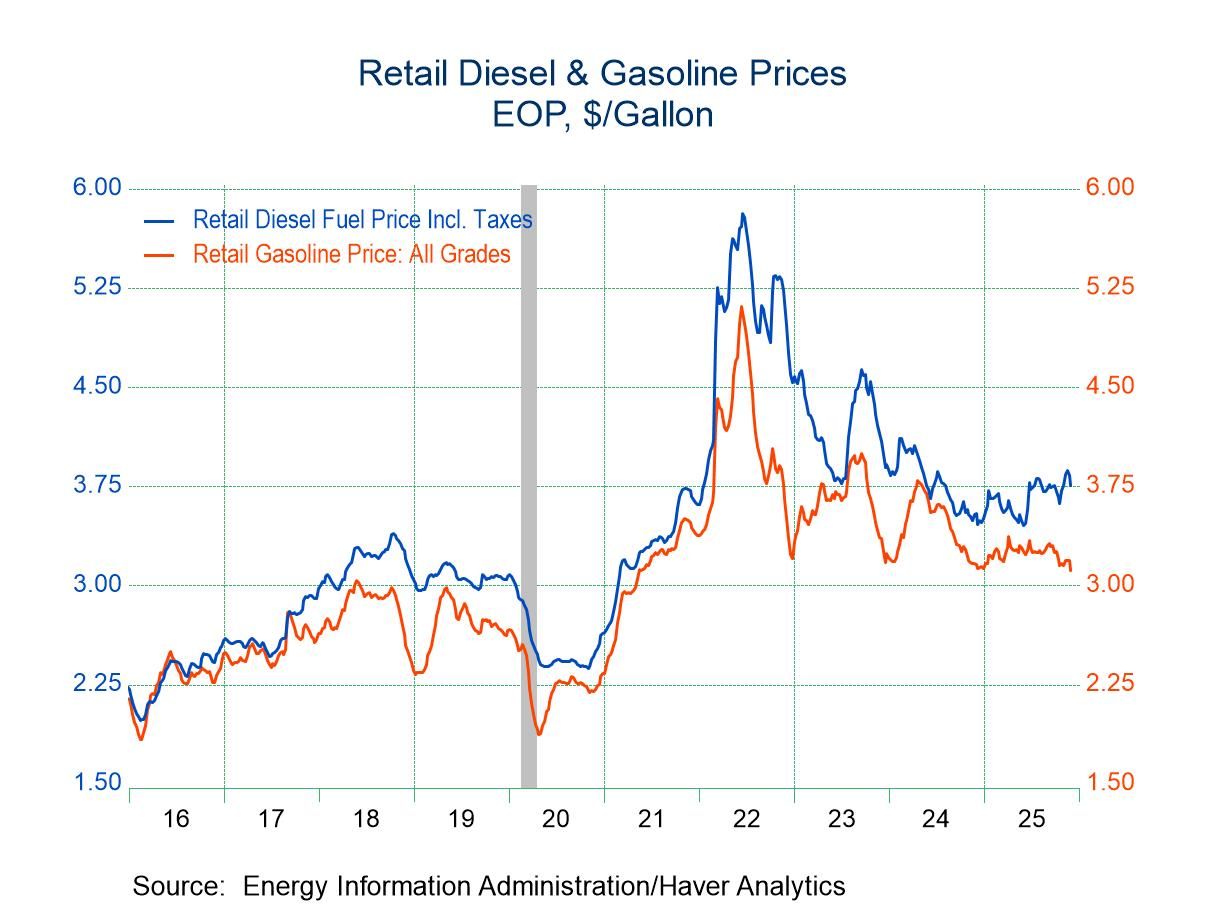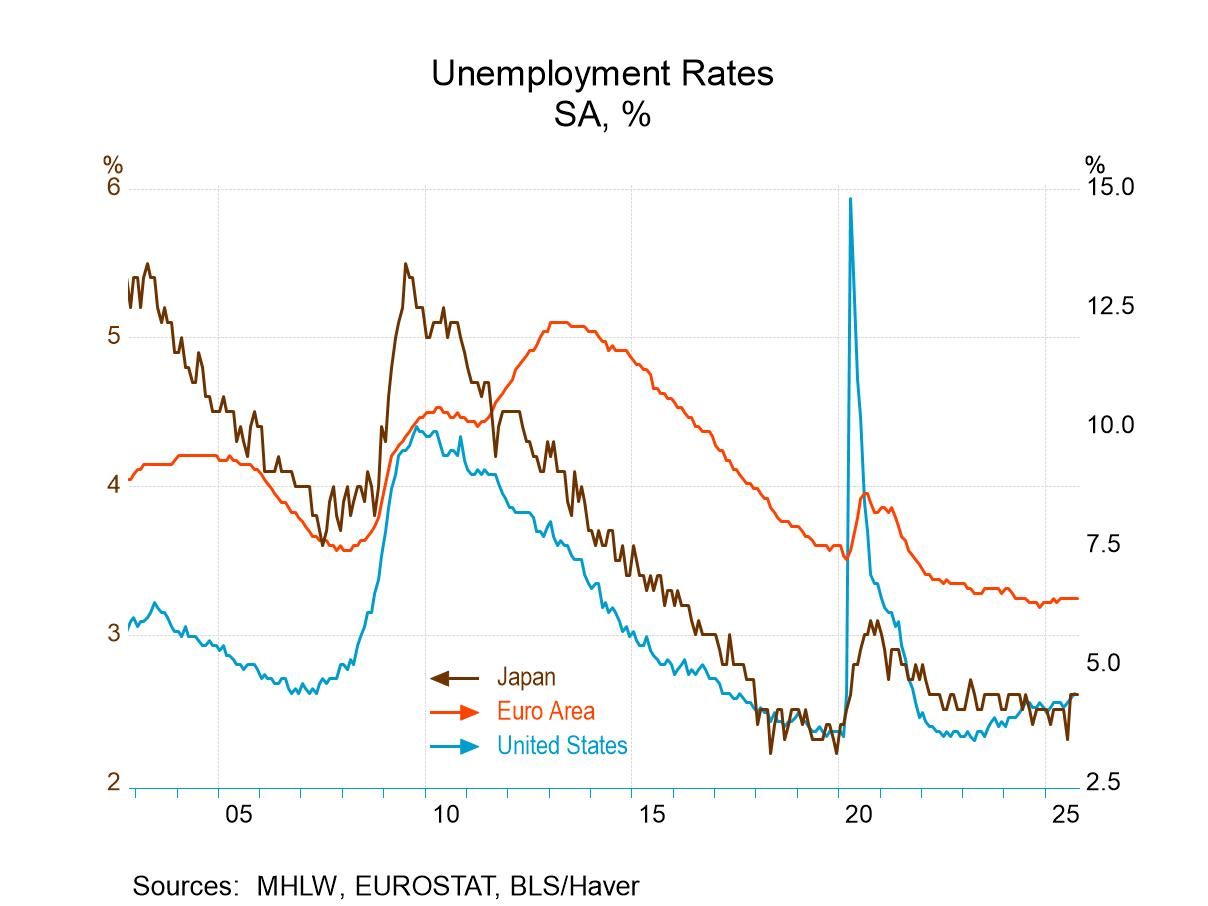 Global| Jun 08 2011
Global| Jun 08 2011U.S. Consumer Borrowing Increases
by:Tom Moeller
|in:Economy in Brief
Summary
The improved job market has encouraged more credit usage by consumers. Reported late yesterday, overall consumer credit rose $6.3B during April following a downwardly-revised March gain of $4.8B. A $5.0B increase has been expected by [...]
The improved job market has encouraged more credit usage by consumers. Reported late yesterday, overall consumer credit rose $6.3B during April following a downwardly-revised March gain of $4.8B. A $5.0B increase has been expected by Action Economics. Credit has risen strongly during the last seven months following declines from 2008 and into 2010.
Non-revolving credit, which accounts for nearly two-thirds of the total, rose for the ninth straight month. The $7.2B increase pulled the y/y change to 3.4% following a 1.5% increase last year. Loans by the Federal government rose 69.9% y/y but finance company lending fell 7.5%. Commercial bank credit fell 6.2% y/y while saving institutions lending slipped 0.8%. Nonfinancial business credit also slipped by 0.4% but pools of securitized assts dropped 20.0%.
Consumers resumed paying down their revolving credit outstanding balances. The $1.0B decline lowered them by 4.9% y/y. Prior to 2009, revolving credit usage had never been negative y/y. Pools of securitized assets dropped 15.2% y/y and commercial bank credit fell 7.1%. Finance company credit rose 5.5% and savings institution credit rose 16.6%. Credit union credit rose 1.4% and nonfinancial business credit remained unchanged.
During the last ten years, there has been a 53% correlation between the y/y change in credit outstanding and the change in personal consumption expenditures, although the correlation recently has weakened considerably. The credit figures are the major input to the Fed's quarterly Flow of Funds accounts for the household sector.
The consumer credit data are available in Haver's USECON database. The Action Economics figures are in the AS1REPNA database.
The U.S. Economic Outlook is the title of yesterday's speech by Fed Chairman Ben S. Bernanke and it can be found here.
| Consumer Credit
Outstanding (M/M Chg, SAAR) |
Apr | Mar | Feb | Y/Y % | 2010 | 2009 | 2008 |
|---|---|---|---|---|---|---|---|
| Total | $6.3B | $4.8B | $6.5B | 0.6 | -1.7% | -4.4% | 1.5% |
| Revolving | -1.0 | 0.1 | -4.2 | -4.9 | -7.5 | -9.6 | 1.7 |
| Non-revolving | 7.2 | 4.8 | 10.6 | 3.4 | 1.5 | -1.3 | 1.5 |
Tom Moeller
AuthorMore in Author Profile »Prior to joining Haver Analytics in 2000, Mr. Moeller worked as the Economist at Chancellor Capital Management from 1985 to 1999. There, he developed comprehensive economic forecasts and interpreted economic data for equity and fixed income portfolio managers. Also at Chancellor, Mr. Moeller worked as an equity analyst and was responsible for researching and rating companies in the economically sensitive automobile and housing industries for investment in Chancellor’s equity portfolio. Prior to joining Chancellor, Mr. Moeller was an Economist at Citibank from 1979 to 1984. He also analyzed pricing behavior in the metals industry for the Council on Wage and Price Stability in Washington, D.C. In 1999, Mr. Moeller received the award for most accurate forecast from the Forecasters' Club of New York. From 1990 to 1992 he was President of the New York Association for Business Economists. Mr. Moeller earned an M.B.A. in Finance from Fordham University, where he graduated in 1987. He holds a Bachelor of Arts in Economics from George Washington University.



